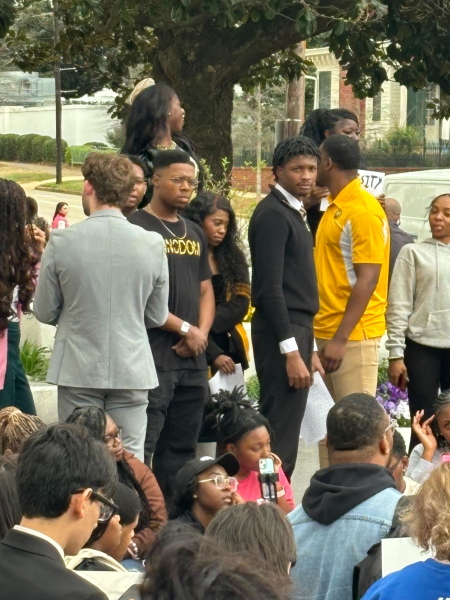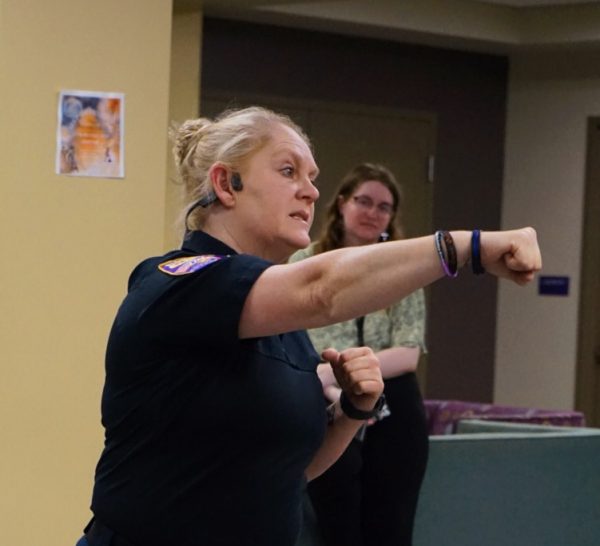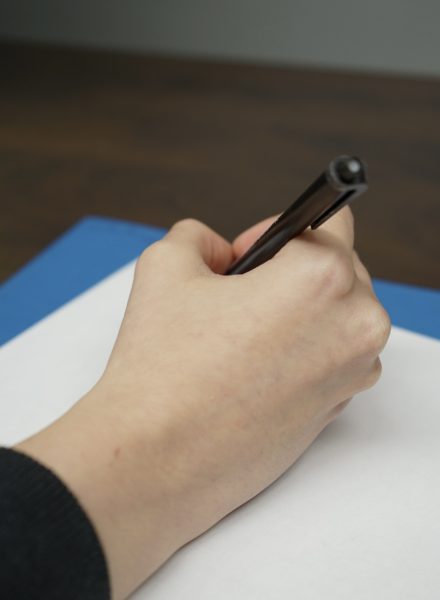School dress codes unfairly target females
January 16, 2020
Whether a child attends a public or private school, they all have one thing in common, a dress code. Dress codes are rules that every student must follow if they do not want to get into trouble by teachers or administrative personnel. Different schools have different forms of discipline for students who do not follow these rules. Whether it be in-school detention or having to call their parent or guardian to come and pick them up, the bottom line is if students do not follow these rules they will be punished or shamed in some way.
In many public-school systems, there is a dress code enforced in an attempt to ensure students of an environment geared toward academic excellence and productivity. Although this is ostensible put into place with no malice intended, it seems that today many schools have a dress code that is geared mainly to young women.
Many dress codes seem to unintentionally oversexualize girls for the benefit of boys. In some cases, this means that dress codes may be catered to only apply to girls. An example of this is with Lauderdale County High School’s dress code rules which doesn’t explicitly address girls, but nevertheless seems written with girls in mind.
“Shirts that expose a large area under the arms or expose undergarments are not allowed during school hours,” is one of their written rules. This may be read as applicable to both boys and girls, but clearly applies to girls as boys traditionally do not require upper-body undergarments.
The majority of Lauderdale County High School’s dress code further address female students, focusing on dresses, skirts, and activewear (leggings). Under the dress code rules outlined on the Lauderdale County High School’s website, the rules specify that clothes should not “disrupt the classroom atmosphere, become unusually distracting, or violate health and safety rules of the school”. It goes on to state that students are not allowed to wear “tank tops, midriff shirts, tube tops, spandex, mesh, fishnet garments, backless tops, strapless tops, tops or dresses with spaghetti straps, tank tops, etc.”
This is clearly directed towards young girls whose bodies are developing and the rule implies that female bodies should be covered so as to not distract male students. After reading the preface of the dress code, it dawned on me that “disrupting the classroom atmosphere” and “unusually distracting” are terms that I had heard that were directed towards me when I was in high school.
After attending a very rural country school in DeKalb County, Ala., I know firsthand what it is like to be treated differently because of the clothes you are wearing. For example, during the 2016 Presidential election, I wore a shirt that sided with, in my county, the minority party.
After walking into my first class of the day a teacher asked me about my shirt and why I had decided to wear it. I told her that I did so to show my support to that particular candidate. This teacher then asked me to call my parents and ask them to bring another shirt to school for me to wear. Luckily, I had packed another set of clothes for an afterschool activity. Considering that my parents were the ones who bought me this shirt, I made the executive decision not to call them to bring another shirt and just put the other one I had on.
Although this example is not specifically related to gender, it does point to another issue with dress code policies; the infringement of first amendment rights. And my experience is not unique.
“My high school also did not allow colored hair, face piercings, or literally any political clothing,” said a female student that asked to be anonymous. “So, if you wanted to wear a Trump shirt or a Black Lives Matter shirt or any of that you would have to change.”
Many young women I spoke to felt as if they were targeted because of what they wore. They all expressed a perceived double standard of the application of the rules for girls as opposed to boys. A woman that reached out to me and shared her experience of feeling sought out because of her gender and clothes.
“I was once ‘dress coded’ because my skinny jeans were light blue,” the woman said. “That because they were a light color, boys were more likely to stare at me.”
This source then proceeded to explain how throughout middle and high school in Marion County, Ala., it was evident that the majority of students that were penalized for dress cods violations were female.
“A teacher told me to change instead of telling the boys to not make perverted jokes – that just drives me insane,” she said. “I was sent home to change, therefore missed class, all because my jeans were a light color. So, you’re telling my 7th- grade self that a boy’s horniness is more important than my education in biology?”.
Another woman who graduated high school almost five years ago remembers an experience from her junior high. She explained that she was told to change because her school had a “no bra strap policy”. This policy was explicitly put into place so that the boys would not be distracted during classes.
“When I was in junior high I got ‘dress coded’ because our bra straps weren’t allowed to be visible so I wore a strapless bra and put on a tank top under my backless shirt and I got ‘dress coded’ because my tank top straps ‘resembled bra straps’,” the woman said. “Boys basically had no restrictions on the way they dressed because basically all of them (dress code rules) are in place because men over sexualize women and we have to cover up so they aren’t distracted during class, but that means they will pull girls out of class to make them change while boys get to stay in class and learn”.
Talking to these women, it became evident that a bias exists when it comes to who was/is targeted for dress code violations and how they are punished.
“I had a pair of jeans that had holes above the knee and was made to put duct tape on every single one of them because it was against dress code and distracting,” said a woman that attended Muscle Shoals High School. “As if putting duct tape over them wasn’t more distracting.”
The majority of the women that I interviewed for this piece attended southern county high schools, so I sought out the experience of Stacey Mandru who attended high school in Chicago. She explained that while the school she attended did have a dress code, it was not enforced.
“We had a dress code, but students didn’t really respect them or follow them,” Mandru said. “I mean girls would wear really short shorts and boys would wear shirts with not so nice references on them.”
This raises the question of whether the enforcement of dress codes is stricter on students in the south because of our “traditional values”.
Roxie Hipps, who attended Mars Hill Bible School in Florence, said that although her private Christan school did not require students to wear a uniform, the dress code was unreasonably strict.
“While looking for a prom dress, I had to make sure that my dress came below my knees,” Hipps said. “I also had to make sure that my back was completely covered and if I did show any cleavage someone would have to alter my dress with another piece of fabric, that was not skin color, and cover up any cleavage.”
Hipps also explained to me that Mars Hill Bible School requires all girls – even ones who did not attend Mars Hill – to send a picture of their dress to a female faculty member prior to prom. If female students failed to comply with this rule, they were not allowed to attend prom.
Hipps said that the principal would routinely walk around the school and look for students who were violating dress code. If he found a student in violation of the dress code, he would call these students out in the middle of class in front of their teacher and peers and tell them either that they had to leave school or to never wear that article of clothing again.
Hipps experienced how it felt to be called out in front of everyone firsthand. She told me that one day she wore a sweatshirt with the MTV logo on it that she had bought from Walmart the day before.
“He looked at me for a few seconds and asked where I had gotten the sweatshirt,” Hipps said. “I told him I bought it from Walmart and he said to me in the most serious tone, ‘Well, don’t ever wear that to school again.’”
Hipps said she felt embarrassed and angered after the public encounter. A local teacher, who asked me to keep his name and school that he worked at private, said he has had to enforce dress code rules on students because of what they were wearing. He said he only enforces the dress code when someone is blatantly disobeying the rules. For example, he once had a student who was wearing a shirt that had the Marlboro logo on it. His school’s dress code prevents students from wearing clothing that promotes smoking, drinking or other illicit activities. This is also listed in Lauderdale County High School dress code which states, “The wearing of clothing advertising alcohol, tobacco, drugs, or suggestive words or pictures or symbols of violence or death shall be prohibited”. The oversexualizing women and girls isn’t limited to school dress codes, it also extends to professional business attire. Plina Hester, who used to work for a bank in Muscle Shoals where the workplace dress code was more extensive that proscribing appropriate attire and specifically targeted female employees. Hester explained that the women who worked there had to have a certain hairstyle. “I worked at a bank with a very strict dress code and anyway the dumbest thing we got in trouble for was wearing our hair in a ponytail because it’s ‘unprofessional.’”













harmony • Oct 24, 2023 at 1:21 pm
i got dress coded just for showing my shoulders like shoulders are not distracting.It’s not our falt that boys and men are pigs .
adriana • Dec 10, 2021 at 7:12 pm
none of the boys have got dress coded only the girls.
Mae • Sep 26, 2021 at 6:51 pm
I was dress coded because I wore skinny straps . My mom was really mad at the school cause they made me change due to my shoulders were showing. Honestly if a lesbian women can control themselves when wearing revealing clothes but men can’t then maybe the clothes aren’t the problem. We shouldn’t have to change our clothes and look just because some horny dude can’t keep his eyes on his paper.
mak • Nov 5, 2021 at 12:11 pm
omg fr!